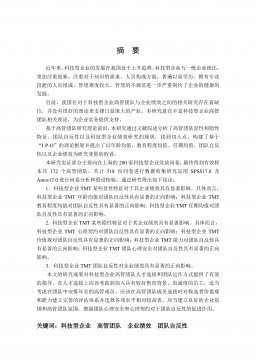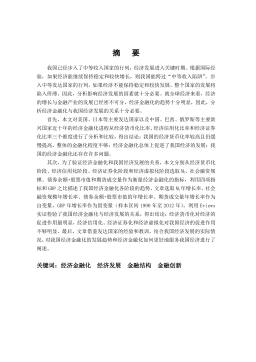叶片数及叶轮流道形状对离心泵流动激励力与诱导噪声的影响
VIP免费
摘要
离心泵在运行的过程当中,由于水泵的机械结构以及内部的流体运动均能使激
励力改变,从而产生振动和噪声,对周围环境造成影响。按照噪声产生机理可以
分为机械结构振动噪声和流体激励产生的噪声。其中机械噪声主要由水泵叶轮及
轴的不对称和不对中引起的;而流体激励产生的噪声则与离心泵内非定常流动引
起的叶片表面、蜗室内表面的压强脉动及泵内涡流密切相关。叶轮作为离心泵的
核心工作部件,其叶片数及叶轮子午流道形状对离心泵的性能及非定常流场脉动
有着重要影响,从而影响离心泵的流动激励及其诱导的噪声。本文基于混合数值
模拟方法研究上述因素对离心泵内流动激励力与噪声的影响。混合数值模拟方法
是目前进行声场预测的常用方法,该方法忽略声场对流场的反作用,首先采用计
算流体力学方法获得非定常流场的数值解,提取流场内的脉动压强为声源,然后
通过求解声学方程获得声场。为了考虑非定常流场激励引起的离心泵结构振动与
声场的相互耦合作用,本文在声场的求解过程中,采用 LMS Virtual.Lab 的声振耦
合模块进行声场求解。主要研究内容如下:
1. 采用 RNG K-ε和大涡模拟模型对离心泵内三维粘性定常和非定常流场进行计
算,并依据离心泵的性能曲线和蜗室内的压强信号对离心泵定常流场与非定常
流场数值解的网格无关性进行了讨论。
2. 在原模型的基础上,保证蜗室、叶轮出口直径、宽度不变,利用水泵相似原理
设计了与原模型额定工况相同的离心泵,两个离心泵的叶轮流道、叶型、叶片
数均不相同,分别为 5和6;然后根据原始水泵模型,令叶片数分别为 6和7,
获得两款新的离心泵。本文对上述四个离心泵模型的性能、非定常流场以及流
动激励引起的声场进行了数值模拟,结果表明:对于叶轮参数相同的离心泵,
叶片数为 7的离心泵扬程较叶片数等于 6和5的离心泵高约 0.5m 和2m 左右。
其蜗壳壁面监测点的压力脉动较后两个模型提高 8.54%和21.14%。同时在叶频
下随叶片数增加蜗壳振动加速度逐渐增大,然而在其他频率下不明显,这是由
于外场辐射噪声与壳体的结构模态关系密切。
3. 利用数值模拟方法对叶轮前盖板转角半径 RT/D2分别为 0.1、0.15 和0.2 的三个
离心泵流场与声场进行计算,数值计算结果表明:随着 RT/D2逐渐变大,离心
泵蜗室内压强脉动和叶轮受到流动激励力先增加后减小。RT/D2等于 0.2 的离
心泵模型蜗舌监测点压力脉动较等于 RT/D2=0.1 离心泵高出 1.2%。在叶频和第
三阶谐频下,RT/D2最大的离心泵壳体振动最剧烈,导致辐射噪声提高,该离
心泵出口处位置在叶频下的辐射噪声为 49dB。
4. 本文在蜗室及叶轮其他参数不变的条件下,对三个具有不同叶片前缘起始位置
的离心泵流场和声场进行计算,获得了离心泵的性能、泵内非定常激励力以及
流动激励诱导的振动与噪声。结果表明:随着叶片前缘位置逐渐远离水泵进口,
离心泵蜗室内压强脉动逐渐减弱而叶轮受到流动激励却逐渐升高。叶片前缘位
置距离心泵进口最远的水泵模型叶轮受到的径向力脉动较最近的水泵高出
2.41%。由声场分析可知,距离心泵进口最远的离心泵模型在前三阶频率下蜗
壳振动加速度最大,在叶频下,90°~120°方向上其辐射噪声达到 50dB。
关键词:离心泵 压力脉动 流动激励力 振动加速度 流动诱导噪声
Abstract
The vibration and noise are caused by pressure fluctuation of the fluid in centrifugal
pump as working, which affect the environment. Therefore, it’s essential to study the
flow exciting force to reduce and control the vibration and noise of the centrifugal
pumps. According to the mechanism of noise generation, the noise can be divided into
mechanical and flow-induced noises. The mechanical noises are generated by the
asymmetry and misalignment of impeller and shaft, while the flow-induced noises
almost come from the unsteady flow, which is closely relate to pressure fluctuation
acting on the blade and volute. Impeller is the most important part of the centrifugal
pump, blade numbers and the meridional channels of which impact significantly on the
pressure fluctuations of centrifugal pump. The factors affecting the flow exciting force
and noise in centrifugal pumps are researched based on a hybrid numerical approach in
the thesis. Hybrid numerical simulation approach is widely used for the prediction of
the sound field, which ignores the action of the sound field on the flow. Firstly, the
numerical solution of the unsteady flow field should be obtained by computational fluid
dynamics method. Then, the pressure fluctuations on the volute and blades are extracted
as the sound source, and the noise radiation is calculated by solving the acoustic
equation. The acoustic coupling module of LMS Virtual. Lab is applied in this paper to
simulated the coupling effect of the structure vibration and the sound field. The work
and results of this thesis are listed as follows:
1. RNG K-εand Large eddy simulations are employed to calculate the steady and
unsteady flow respectively. The flow field of centrifugal pump is calculated with
different grid cells to analyze the influence of computational grid number on the
numerical solution.
2. A centrifugal pump with a six-blade impeller is chosen as the prototype pump, a
new pump with five-blade impeller is designed at the same performance parameters
and the volutes . Then two other centrifugal pumps with six and seven blades
impellers are chosen which have the same blade type and meridional channel as the
prototype pump. The hydraulic performance, unsteady flow performance and the
radiate noise of the four centrifugal pumps are analyzed. The results show that the
head of pump with seven blades is higher than that with six and five blades about
0.5m and 2m respectively for the case of the same impeller shape. The pressure
fluctuation is also higher about 8.54% and 21.14% respectively. The acceleration of
volute is gradually increase at blade frequency, but the result at other frequencies is
not obvious. This is closed related to the radiated noise and the structure of shell.
3. The numerical simulation method is adopted to analysis the flow and sound field of
three centrifugal pumps, the front shroud corner radius RT/D2 of which are 0.1, 0.15
and 0.2 respectively. The results show that the pressure fluctuation and the
components force of impellers are irregularity with the increase of RT/D2. The
pressure fluctuation of the pump with RT/D2equals 0.2 is higher than that pump with
RT/D2equals 0.1 about 1.2%. The pump with the highest RT/D2 whose casing
vibration is the most dramatic which lead to the radiation noise improve at the first
and third frequency. The radiation noise is 49dB at the outlet of this centrifugal
pump under the blade frequency.
4. Three centrifugal pumps with different location of blade inlet which have the same
volute and impeller geometry shape. In order to obtain the hydraulic performance,
unsteady flow exciting force and radiate noise of centrifugal pumps, the numerical
simulation of three-dimensional viscous flow and acoustic field is calculated. The
results show that the pressure fluctuation of volute is decrease while the components
force of impellers are opposite with the position of the leading edge of blade
gradually away from the inlet of centrifugal pump. The fluctuation of the radial
force of the pump which the blade leading edge located the furthest away from the
inlet is 2.41% higher than the nearest one. At the same time, the pump with the
farthest distances to the pump inlet whose vibration acceleration is the largest at the
first three frequencies. Its radiate noise is 50dB in the direction of 90°~120°at blade
frequency.
Key words: Centrifugal pump, Pressure Fluctuation, Flow exciting
force, Vibration acceleration, Flow-induced noise
目录
摘要
Abstract
第一章 绪论 .................................................................................................................... 1
1.1 研究背景及意义 ................................................................................................ 1
1.2 离心泵流动激励诱导噪声与振动的研究现状 ................................................ 2
1.2.1 实验研究 .................................................................................................. 2
1.2.2 数值研究 .................................................................................................. 3
1.3 本文主要研究内容 ............................................................................................ 5
第二章 数值模拟方法及离心泵网格无关性验证 ........................................................ 7
2.1 数值模拟方法 .................................................................................................... 7
2.1.1 流场数值计算方法 .................................................................................. 7
2.1.2 声场数值计算方法 .................................................................................. 9
2.2 计算模型介绍 ................................................................................................... 11
2.3 计算模型网格的划分 ...................................................................................... 14
2.4 网格无关性的验证 .......................................................................................... 16
2.5 本章小结 .......................................................................................................... 20
第三章 叶片数对离心泵流场及声场的影响 .............................................................. 21
3.1 叶片数对离心泵定常流场的影响 .................................................................. 21
3.1.1 离心泵水力性能对比分析 .................................................................... 21
3.1.2 离心泵定常流场特性对比分析 ............................................................ 22
3.2 叶片数对离心泵非定常流场的影响 .............................................................. 26
3.2.1 蜗室内表面的压强分布 ......................................................................... 26
3.2.2 叶片数对叶轮流动激励力的影响 ........................................................ 29
3.2.3 叶片数对不同时刻叶轮涡量的影响 ..................................................... 31
3.3 叶片数对离心泵流动诱导噪声的影响 .......................................................... 33
3.4 本章小结 .......................................................................................................... 38
第四章 RT/D2对离心泵流场及声场的影响 ................................................................ 39
4.1 RT/D2对离心泵定常流场的影响 ..................................................................... 39
4.2 RT/D2对离心泵非定常流场影响 ..................................................................... 41
4.2.1 蜗室内表面的压强分布 ........................................................................ 41
4.2.2 RT/D2对叶轮流动激励力的影响 ........................................................... 43
4.2.3 RT/D2对不同时刻叶轮涡量的影响 ....................................................... 45
4.3 RT/D2对离心泵振动噪声的影响 ..................................................................... 47
4.4 本章小结 .......................................................................................................... 51
第五章 叶片前缘位置对离心泵流场及声场的影响 .................................................. 52
5.1 叶片前缘位置对离心泵定常流场的影响 ...................................................... 52
5.2 叶片前缘位置对离心泵非定常流场的影响 .................................................. 55
5.2.1 蜗室内表面压强分布 ............................................................................ 55
5.2.2 叶片前缘位置对叶轮流动激励力的影响 ............................................ 57
5.2.3 叶片前缘位置对不同时刻叶轮涡量的影响 ........................................ 59
5.3 叶片前缘位置对离心泵流动诱导噪声的影响 .............................................. 61
5.4 本章小结 .......................................................................................................... 64
第六章 结论与展望 ...................................................................................................... 66
6.1 研究工作总结 .................................................................................................. 66
6.2 研究展望 .......................................................................................................... 66
参考文献 ........................................................................................................................ 68
在读期间公开发表论文和承担科研项目及取得成果 ................................................ 72
致谢 ................................................................................................................................ 73
第一章 绪论
1
第一章 绪论
1.1 研究背景及意义
水泵作为船体的辅助设备之一有着较为广泛的应用。它将原动机的机械能转换
成为动能、压力能。泵的种类繁多,按照泵的工作原理主要分为叶片式泵和容积
式泵两大类。离心泵作为叶片泵的一种,由于具有效率高、体积小并且能够和高
速的原动机直接连接等优势在日常生活、工农业和军事国防等领域具有极其广泛
的应用。
随着国民经济的不断发展,各个行业对离心泵性能的要求也日益提高,因应用
环境不同,对水泵的性能要求也有所不同。比如我国南水北调工程中需要的离心
泵必须有较大的流量;锅炉给水泵、在矿井中使用的排水泵和应用在油田方面的
注水泵均希望具有高效率,同时满足所要求的扬程。而在具有静音要求的环境下,
离心泵运转引起的噪声与振动将是制约离心泵使用的主要性能指标。
离心泵在运行的过程当中,由于水泵的机械结构以及其内部的流体运动均能够
产生激励力,从而产生振动和噪声。按照噪声产生的机理,离心泵运行过程中产
生的噪声可以分为机械噪声和流体激励产生的噪声[1~2]。其中机械噪声是由于水泵
转轴的不对称和不对中引起的,而与此相关的研究已经非常深入,并且取得了一
定的成果[3~4]。同时机械噪声还包括了电机噪声,电机工作带动水泵运转产生的噪
声。蜗室内表面、叶片表面和泵内涡流将作为流动激励使离心泵产生噪声。本文
主要研究流动动力对离心泵作用产生的噪声情况。根据流动激励力的作用位置以
及诱导振动噪声的方式,离心泵内部的激励力主要分为三类[5]:一是作用在叶片上
的压强脉动,该压强脉动作为偶极子噪声源向外辐射噪声;二是作用在蜗室内表
面的非定常力,该作用力不仅引起泵体与基座的机械振动,同时向周围环境辐射
噪声;最后一类是作用在叶轮上的周期性径向力,由于非轴对称蜗室的影响,离
心泵内流场呈现出非轴对称的分布,这使得叶轮在旋转过程当中受到周期性变化
的径向力作用,该周期性力作用在叶轮轴上引起轴系的振动,并且通过连接结构
传递到泵体和基座,引起水泵的振动和噪声。文献[6]的研究表明,第一类激励引起
的泵体的振动和噪声远小于第二类,同时第二类和第三类激励力对泵体的振动和
噪声贡献相当。目前,关于离心泵内流体压强脉动特征及其控制的研究也多有公
开报道[7~10],主要集中于研究离心泵蜗舌部分的压力脉动情况,包括改变叶轮与蜗
舌的间距来减小蜗舌区域的压力脉动等。
叶轮—离心泵中最核心的部件,它的成型特征对离心泵的流动的振动和噪声将
产生显著的影响,不同特征的叶片与蜗舌相互作用时将产生不同的压力脉动情况,
叶片数及叶轮流道形状对离心泵流动激励力与诱导噪声的影响
2
同时叶轮受到的流体激励力作用也将不同,所以本文尝试研究叶片特征对离心泵
噪声的影响希望对以后的水泵噪声研究工作起到很好的参考作用。
1.2 离心泵流动激励诱导噪声与振动的研究现状
在早期由于计算机数值模拟条件的制约,对离心泵流体激励力产生的噪声的研
究主要集中于实验手段。近年来随着计算机能力的大幅度提高以及计算流体力学
(Computational Fluid Dynamics,缩写 CFD)的快速发展,通过数值模拟方法研究
离心泵流体激励力产生的噪声逐渐成为了一种更加有效的研究方法。此外也有不
少的研究人员通过实验和数值模拟相结合的手段来研究离心泵的噪声问题,这些
研究工作均极大地推动了离心泵流体激励力噪声研究的发展进程[11~13]。在本节对
离心泵流体激励力诱导噪声研究介绍中,将从实验研究和数值计算两个方面进行
介绍。
1.2.1 实验研究
1990 年N.Arndt 等[14]采用实验的方法来研究带有叶片扩压器的离心泵在运行
过程当中动静转子之间的干涉问题。该实验是在改变运行流量和扩压器与叶轮叶
片之间的间隙的条件下来监测离心泵内部的压力脉动情况。实验结果表明离心泵
内部最大压力脉动区域发生在叶轮叶片和扩压器位置处,扩压器压力脉动最剧烈
的位置是在其叶片吸力面前缘,而叶轮叶片则出现在尾缘位置。但是实验发现压
力脉动情况与流量的变化却不相同,扩压器的吸力面位置的压力脉动随着流量的
减小而逐渐降低,然而叶轮叶片的尾缘位置却是随着流量的减小其压力脉动逐渐
升高。同时增加扩压器叶片数量能够有效降低叶轮叶片位置处的压力脉动。
1998 年Yoshiki Yoshida 等[15]通过实验手段来研究叶轮制造偏差对水力失衡现
象的影响。实验表明,流体激励力随着叶轮制造偏差程度的提高而增大。他们还
发现,流体激励引发的泵体振动是随着流量的不同而发生变化的,这是与质量不
平衡力最大的不同之处,而且水力失衡是影响高速旋转水泵平衡过程中的一个十
分重要的因素。
2003 年Jong-Soo Choi 等[16]实验检测叶轮叶片上的压力脉动情况来研究大流量
水泵叶轮的非定常流动以及产生噪声的机制。由于叶轮是在无蜗壳和扩压器的条
件下运行的,所以忽略叶轮与蜗舌之间压力脉动产生的噪声。实验测得的速度分
布数据图表呈现出喷气式的形状,这导致了在该位置处出现了大涡量区域。实验
还发现,叶片压力面尾缘位置处的高速流体以旋转涡的形式逐渐向叶片吸力面的
低压区流动,这使得叶片吸力面出现了流动分离现象,导致叶片尾缘位置出现较
摘要:
展开>>
收起<<
摘要离心泵在运行的过程当中,由于水泵的机械结构以及内部的流体运动均能使激励力改变,从而产生振动和噪声,对周围环境造成影响。按照噪声产生机理可以分为机械结构振动噪声和流体激励产生的噪声。其中机械噪声主要由水泵叶轮及轴的不对称和不对中引起的;而流体激励产生的噪声则与离心泵内非定常流动引起的叶片表面、蜗室内表面的压强脉动及泵内涡流密切相关。叶轮作为离心泵的核心工作部件,其叶片数及叶轮子午流道形状对离心泵的性能及非定常流场脉动有着重要影响,从而影响离心泵的流动激励及其诱导的噪声。本文基于混合数值模拟方法研究上述因素对离心泵内流动激励力与噪声的影响。混合数值模拟方法是目前进行声场预测的常用方法,该方法忽...
相关推荐
-
跨境电商商业计划书模版VIP免费
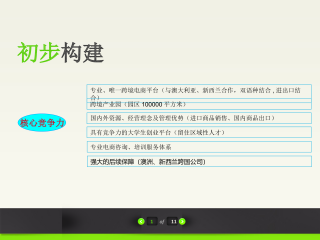
 2025-01-09 27
2025-01-09 27 -
跨境电商方案范文VIP免费
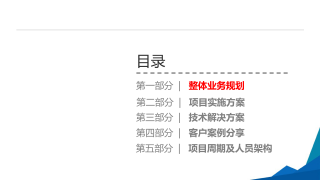
 2025-01-09 14
2025-01-09 14 -
创业计划书VIP免费
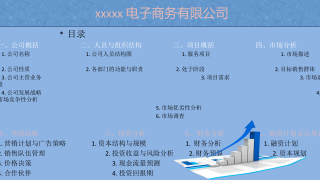
 2025-01-09 18
2025-01-09 18 -
xx生鲜APP计划书VIP免费

 2025-01-09 12
2025-01-09 12 -
跨境电商创业园商业计划书(盈利模式)VIP免费
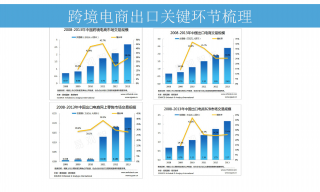
 2025-01-09 8
2025-01-09 8 -
跨境电商计划书VIP免费
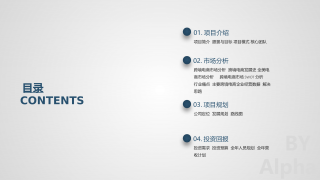
 2025-01-09 13
2025-01-09 13 -
绿色食品电商平台项目计划书VIP免费

 2025-01-09 22
2025-01-09 22 -
农产品电子商务商业计划书VIP免费

 2025-01-09 9
2025-01-09 9 -
农村电商平台商业计划书VIP免费
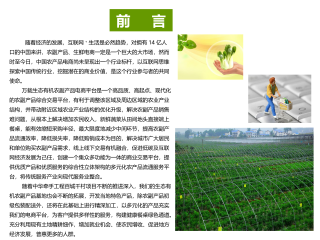
 2025-01-09 13
2025-01-09 13 -
生鲜商城平台商业计划书VIP免费
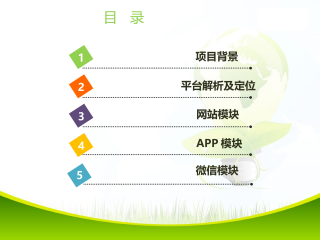
 2025-01-09 21
2025-01-09 21
作者:赵德峰
分类:高等教育资料
价格:15积分
属性:77 页
大小:5.48MB
格式:PDF
时间:2024-11-11


